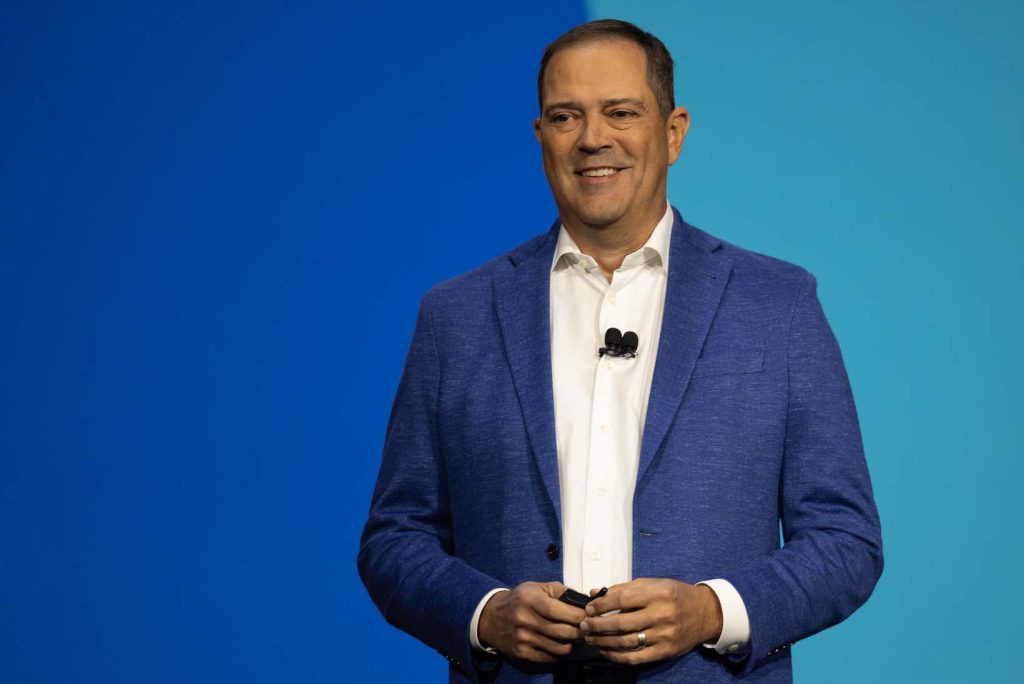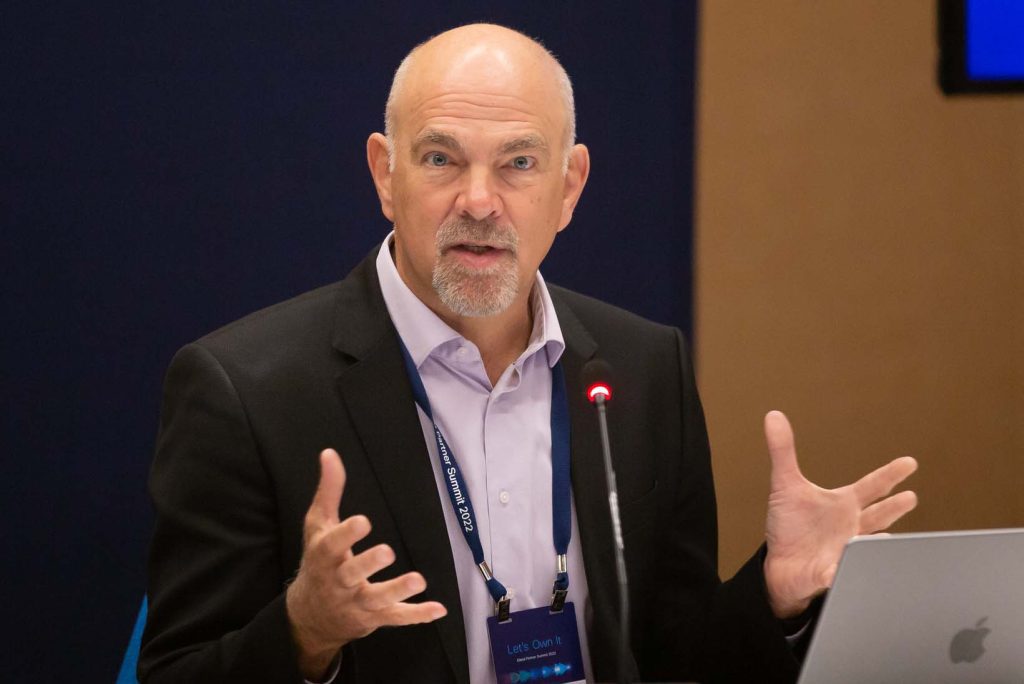March 5, 2024
In life, some say it takes 66 days to form a habit and 10,000 hours to master a craft. In business however, the science is out on how long is required to build a market.
Consider managed services as a leading example – an ongoing enigma in an ecosystem searching for value creation.
“Every time I present, it’s the same slides,” shared Alexandra Zagury, Global Vice President of Partner Managed Services and as-a-Service Sales at Cisco. “I keep on telling my team, ‘oh my gosh, should we change?’ But it takes time to talk this service creation language and people are taking pictures constantly.”

Speaking on the sidelines of Cisco Live in Melbourne – the vendor’s flagship regional event in Asia Pacific, Japan and China (APJC) – Zagury’s anecdote is a simple yet correct assessment of the path ahead for managed service providers (MSP).
In theory, well-documented but in practice, a work in progress. Relentlessly hammering home the message is fundamental at a surface-level but beyond that, a deep level of strategic intent is required.
For any company worth its salt, the business brief is usually simple – beat the competition… win deals, expand share and make money. Then repeat.
Irrespective of industry, rivals have squared off against each other for centuries under this widely recognised framework, with strategies tending to converge along the same basic dimensions of competition.
Creating new market space requires a different pattern of strategic thinking however.
“Instead of looking within the accepted boundaries that define how we compete… look systematically across them,” advised W. Chan Kim and Renée Mauborgne, Professors of Strategy and Management at INSEAD.
By doing so, organisations can find unoccupied territory that represents a “real breakthrough” in value.
As outlined in a Harvard Business Review analysis co-authored by Professors Kim and Mauborgne, businesses seeking to move into new markets should start by looking across…
“Let’s take a little step back and ask, why managed?” Zagury questioned. “Firstly, because of the abstraction of technology to the platform which has been driven by the hyperscalers.
“Not only was there a shift in moving workloads to the cloud but also how businesses consumed technology – this experience has changed the commercial model. Customers now expect to consume and operate technologies under a single pane of glass.”
The conflation of technology and operation outcomes has also triggered an economic change among customers, Zagury explained.
“Monetising in the world of platforms is less about the resale of equipment with single digit margins, rather how to add value to a specific use case as a partner or vendor,” she said.
“Monetisation has moved away from resale to the services stack – look at how Adobe moved from perpetual to subscription. It’s not about selling technology itself but technology with a service. That shift is happening.”
Businesses that generate new markets where none existed before must posses fresh perspectives and psychological states to trigger change.
For a company the size and scale of Cisco – with billions in revenue on the line – the approach to building a managed services empire across the world is anchored in:
Measuring impact to create service value
While Cisco embraced the shift to software and recurring revenue many years ago, rhetoric accelerated following the appointment of Chuck Robbins as CEO in mid-2015. Signalling a shift away from hardware, a public declaration is on the table that 50% of company revenue will originate from software sales by 2025.
Internally, a change management program is underway focused on ensuring the organisation has the right people, structure, tools and capabilities to meet such aggressive software targets.

Every two years, the business runs a Route To Market Study to assess managed services progress – this is intellectual property (IP) billed as “unique” in comparison to competing vendors.
According to findings, 46% of Cisco’s total addressable market from a product perspective will be consumed as a managed service. Today, that number stands at approximately 15%.
“We track that and for Cisco to do well, we have to do well supporting MSPs,” Zagury said.
Deal tagging is also commonplace to track managed services delivery as a “very big” key performance indicator (KPI) for Cisco – during the last quarter alone, tagged deals increased by 70%. Also, internal sellers are paid 2X for selling with an MSP in acknowledgment that sales cycles are longer and pitches are more complex.
This is supported by pipeline that originates from service creation engagements which usually starts with a “white glove” approach to the first few deals – “we don’t just do workshops and walk away, we’re there to help MSPs land their first customers.”
Whether triggered by customer demand or margin compression forcing the hand of value-added resellers (VARs), maturity varies based on region with Australia viewed as a pace-setter in APJC. At the other end of the spectrum, India remains a resell heavy market focused on box shifting.
“But don’t forget that not all MSPs are created equal,” Zagury clarified. “It’s a very vast partner archetype with many different business models and strategies.
“The market is still confused in areas because managed services in the old style was ‘mess for less’. It was also the outsourcing industry and offshore vs. onshore with big projects.”
While various ways exist to slice and dice the data, Zagury outlined three key phases of managed services maturity in the market – a definitive assessment by which the partner ecosystem can benchmark progress.
“That is already at the start of composable services which is scalable,” Zagury said. “But the bulk of the market is currently in the catalogue phase.”
Regardless of progress however, Zagury and her global team has developed an outcome chain methodology designed to help partners understand how to define success and then reverse engineer that to a services stack offering.
The core tenants of defining an outcome are:
This has also permeated the tender process with request for proposals (RFP) now moving beyond service-level agreement (SLA) performance in favour of more advanced KPIs.
According to Zagury, four steps exist to achieve an outcome – Explore, Deploy, Guide and Experience – which falls under the vendor’s Edge Framework.
“We identified 23 service segments across these four stages and some blew up to 100 types of services,” she stated. “We use this blueprint to guide our partners depending on their archetype and business model.”
For example, Logicalis – an award-winning global Cisco partner – assumes the lead role in the outcome chain as a specialised MSP, tasked with stitching together solutions and operating the technology on behalf of the customer.
“It also makes MSPs think about what base services are offered and how they differentiate in market,” Zagury expanded. “Do you need to partner with an ISV to change your proposition and make the offering more advanced? That’s how we look at it.”
Approximately 90% of all annual bookings run through the channel at Cisco, which appointed Rodney Clark as Senior Vice President of Partnerships and Small and Medium Business in November.
Re-engineering an ecosystem with scale in mind
With thousands of partners across the world – spanning the core technologies of networking, collaboration, security and connectivity – this is an ecosystem which is as wide as it is deep.

The theory of Cisco is best amplified by the practice of partners however, with the channel tasked with “adding their own flavour” on top of standardised frameworks. This is evident by the vendor’s “three Ps” approach to indirect engagement:
Platform is centred on building “managed-ready” technology as a fundamental pillar, supported by multi-tenancy capabilities. Preference is focused on “building the machine” to help position Cisco favourably from a strategic partnership standpoint.
“Preference isn’t always the technology,” Zagury clarified. “Are we easy to do business with? Do we provide support? If 60-75% of partner revenue is going to be recurring, we have to demonstrate how they make money.”
But don’t forget saving money also because two costs hit recurring revenue the hardest for MSPs – COGS and SG&A. In other words, cost of goods sold (COGS) and selling, general and administrative expenses (SG&A).
“Firstly, COGS,” Zagury said. “We want to lower the cost of buying technology from us through automation that reduces the bill because approximately 70% of COGS is people.
“Secondly, we want to lower SG&A through operational guides such as first-meeting decks and white-label marketing collateral that just requires a logo. We want to lower the cost of going to market.”
Performance wise, programmatic pricing is helping to redefine the value change through an incentives-based approach.
“We’re one of the only companies that does over 70% of their pricing as custom customer-based pricing,” Zagury added. “That means you have to go to an Account Manager to source a price to close a deal but MSPs don’t like that. Hence why we have programmatic pricing which is attached to our Partner Program.”
This is in addition to advanced services for MSPs which offers instant access to level three support plus a shift away from back-end rebates. Meanwhile, Provider Investment Funds (PIF) are used as sales execution headcount with the aim of accelerating growth across specific products or solutions.
“MSPs don’t want back-end rebates because it only goes to procurement, they never see the money,” Zagury explained.
“Some partners have opted out of our back-end rebate incentive program because it’s no longer relevant. They’re not a reseller so would rather put that money in a wallet and do something more valuable instead.”
Aligned to most tier-one vendors, Cisco works directly with the high-end channel to execute this approach with Geofran Thomas heading up the Strategic Partners and Managed Services business in APJC.
Beyond the top-performing partners, distribution is then relied upon to expand market reach further.
“How do we execute service creation at scale?” Zagury asked. “That’s our biggest problem statement currently and we’re working with distributors on that process.”
Leading this charge is Andrew Sage – Vice President of Global Distribution and SMB Sales at Cisco – who is overseeing work to build a library of ready-made offers for MSPs transacting via distribution.
“We have 18 offers in our library which contains guidance on reference architecture, commercial modelling, sales acceleration and marketing documentation,” Zagury said. “The vision we have is similar to the hyperscalers in that MSPs can access the library in a self-service way.”
Demonstrating loyalty, advocating patience
J. Paul Getty – an American-born British petroleum industrialist who founded the Getty Oil Company in 1942 – considered patience as the “greatest business asset”. That underestimated ability to simply wait… hold the line and trust the process.

While true change takes time – especially of this magnitude as thousands of ecosystem partners simultaneously overhaul business models and value offerings – perhaps patience is a luxury today. Especially for a business listed on the Nasdaq.
At what point does the tone of messaging change from persuasion to ultimatum? Will long-term loyalty be in jeopardy?
“We always hear the same thing, ‘oh, you now need different partners to hit your targets’, which we disagree with,” Zagury shared. “We don’t need different partners and in areas, the channel has been way faster than us to embrace software.”
Citing “so many misnomers” in the industry, Zagury referenced the work of distribution in building software marketplaces upon which vendors such as Microsoft are dependent.
“They’re all Microsoft’s biggest partners and know how to sell software very well,” she affirmed.
“We needed to change the way we defined the value exchange and how our programs worked. We’ve built a capability which now looks at the partner lifecycle and created internal roles based on that.”
Zagury labelled this as a factory – “but some folks don’t like that name” – which houses an Offer Development Team deliberately created for this purpose.
An MSP-based roadmap was also kick-started through Cisco Networking and the sponsorship of Jonathan Davidson as Executive Vice President and General Manager of the division.
Then, a Partner Account Manager (PAM) role was redefined as Partner Engagement Manager because while relationships remain important, MSPs require engagement based expertise – “à la, consultancy”.
This now requites end-to-end accountability for all engagements and projects that happen within an account, beyond simply business planning to help MSPs orchestrate and launch new services.
“We also looked at the function of service creation as a job,” Zagury outlined. “It’s a very different role trying to secure preference for Cisco in a partner service catalogue. We had to re-engineer that, supported with sales acceleration, sales execution and partner success.”
The bulk of the Cisco Meraki managed business built in the US – in partnership with Comcast and Spectrum – originated from investment in sales execution resources.
In looking ahead, Zagury acknowledged that the roadblock to future managed services success is centred around:
Finding skilled people to execute roles related to MSP growth is a challenging undertaking in a channel built on the foundations of reselling. It’s not a sales person role per se, rather a product manager function in some aspects.
“When I first started this in Europe, the best people I found were in service delivery because naturally, they knew how to deliver a service,” Zagury recalled. “They have the muscle memory to re-engineer backwards to build a service offering and these have proved to be my most successful hires.”
On the flip side, digitising the process in an optimal manner remains mission-critical in meeting future scale ambitions.
For example, the hyperscalers started out as a marketplace without the need for huge service creation teams. Whether learning how to migrate a workload or understanding certification levels, the process was – and still is – very digitised.
“Should we come up with a certification for service creation?” Zagury questioned. “We want to make this a profession that people are proud to be apart of.
“In the past, a lot of our specialists offered service creation but they were also sellers – those skills are different and this is now a full-time job.”
Inform your opinion with executive guidance, in-depth analysis and business commentary.